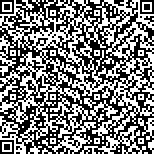| 摘要: |
| 城镇化进程蚕食乡村地区所引发的传统
居住空间变迁,使城市边缘区的农转非社区面临
社会空间重构。这类社区的公共空间完全按照
城市居住景观来修建,但居民延续了很多农村原
有的生活习惯与社区文化,与周边城市在空间上
的同质化和社区居民与“城里人”的异质性导致
按城市住区景观设计的农转非社区公共空间与
社区居民日常活动的不适配。因此,本文首先回
顾了我国农转非社区的形成、社会异质性与空间
同质化特征,并梳理了国内外异质社区公共空间
适配性的相关研究;其次,基于对重庆市嘉和社
区的田野调研,从公共空间属性与使用两个层
面,分析了农转非社区居民的日常活动特征与公
共空间的运行机制,评析了各项公共空间资源配
置与利用率、聚集性以及活动类型之间的适配
关系,探讨了影响农转非社区公共空间配置与设
计与居民日常活动需求失衡的原因,为国内农转
非社区更新,尤其是农转非社区公共空间质量的提升提供科学依据和政策建议。 |
| 关键词: 农转非社区 公共空间 适配性 日常生活 |
| DOI:10.13791/j.cnki.hsfwest.20230613 |
| 分类号: |
| 基金项目:国家自然科学基金项目(51978090);“十三五”国
家重点研发计划项目(2019YFD1100905) |
|
| Research on the Use of Public Space in Rural-to-Non-Community Communities from the Perspective of Daily Life: Taking Jiahe Community, Lijia Street, Chongqing as an Example |
|
XU Miao,YANG Xuemei
|
| Abstract: |
| With the acceleration of industrialization and urbanization, urban land expropriation
and demolition will make the number of landless farmers increase. Under the double thrust of the
urbanization wave and the expansion impulse of the local government, rural-to-non-communities
are the special products of the “subsidies in kind” policy adopted by the government for the relocated
residents in the reconstruction of old cities and the renovation of rural homestead. The public space
of this kind of community is completely built in accordance with the urban residential landscape,
and the residents of the community are undergoing the transformation from the identity of farmers
to the identity of citizens, but the residents still retained many of the original rural living habits and
community culture. The spatial homogeneity with surrounding cities and the heterogeneity between
community residents and “city people” lead to the incompatibility between the public space designed
according to urban residential landscape and community residents’ daily activities.
This paper first teases out the current research status of public space adaptation in
heterogeneous communities at home and abroad, reviews the formation of rural-to-non-communities
under the background of rapid urbanization, the heterogeneity of social attributes, the homogeneity
of spatial attributes and other characteristics, and summarizes the adaptation problems of rural-to non-communities at different levels. Based on the theories related to daily life, this paper discusses
the ways to solve the adaptation problem of public space in rural-to-non-communities. The
theoretical research shows that the study of heterogeneous communities abroad is not completely
applicable to rural-to-non-communities in China. On the one hand, due to the special restrictions of
the household registration system in China after the reform and opening up, the background of the
formation of foreign heterogeneous communities is different from that in china. That is to say, on
the basis of the same heterogeneous communities, rural-to-non-communities in China have formed
a unique social space attribute of spatial homogeneity and social heterogeneity. On the other hand,
foreign studies on heterogeneous communities lack an analysis of residents’ actual lives from the
perspective of daily life. As a result, the focus of reproduction of public space is forced adaptation of
material space and social behaviors, ignoring the subjectivity and mobility of daily life.
Secondly, based on the field research of Jiahe Community in Chongqing, this paper analyzes
the characteristics of daily activities and the operation mechanism of public space of residents in
rural-to-non-communities from the two aspects of public space attribute and use, and evaluates and
analyzes the adaptation relationship between the allocation and utilization of various public space
resources, aggregation and activity types. At the same time, this paper discusses the reasons that
affect the unbalance between the allocation and design of public space and the demand of residents’
daily activities. The results show that Jiahe community has the characteristics of homogeneity in
space and heterogeneity in social structure, and community residents’ demand for public spacehas the dual attributes of coexistence of urban and rural areas. From the perspective of resource allocation, the function of formal public space is relatively
balanced. The self-created public space encroaches on public places and breaks the space system composed of central, entrance and marginal public Spaces.
From the perspective of big data, the distribution of spatial resources and aggregation is misplaced, and the overall active intensity distribution is uneven.
In time and space activities, the space function differs from the actual number of participants. In the behavior scene, the activity type of residents does not
match the facility type.
Finally, on the basis of the practical research results, the study adopts the systematic transformation mode of “combining the above and below” to show
the characteristics, public space overview, public space use and other research results of the community residents to understand the will of the community
residents for the transformation of public space. Combined with the research results and residents’ opinions, the existing material space elements and basic
functions of the community are sorted out, and the initial public space optimization strategy is formed. In order to ensure the continuous improvement of the
transformation results, it is necessary to establish a long-term governance mechanism for various subjects (government, community and residents), such as
building a community public participation platform, introducing a community planner system, and organizing regular residents’ sharing meetings.
Therefore, the paper provides scientific basis and policy suggestions for the renewal of rural-to-non-communities, especially for the improvement of the
quality of public space. |
| Key words: Rural-to-Non-Community Public Space Compatibility Daily Life |


